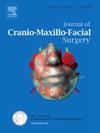Validation of a training simulator for temporomandibular joint arthroscopy
IF 2.1
2区 医学
Q2 DENTISTRY, ORAL SURGERY & MEDICINE
引用次数: 0
Abstract
Objective
This study aims to evaluate a temporomandibular joint (TMJ) arthroscopy simulator using construct and face analyses.
Methods
Thirty participants attending a TMJ training course were divided into novice and expert surgeons (more than 100 procedures) and performed two arthroscopic tasks (cavity access/cavity exploration) during which the surgical tool movements were tracked. Five objective metrics were used to measure surgeon ability and construct validity was assessed by comparing novel and expert performance. Face validity was assessed by subjective questionnaires rating simulator realism and utility (1–5 scale) and tissue consistency (1–4 scale).
Results
Expert surgeons spent less total time (76.58 ± 47.40 vs. 27.60 ± 5.52; novices vs. experts) with higher average speed (7.40 ± 5.32 vs. 12.65 ± 5.37) and average acceleration (198.33 ± 2.42 vs. 325.93 ± 87.36). Movement smoothness revealed lower values in novice surgeons (3638.33 ± 1083.95 mm/s3; 2553.70 ± 768.01 mm/s3) than in expert surgeons (4655.63 ± 837.05 mm/s3; 4172.08 ± 1098.61 mm/s3). All these outcomes reached statistical significance (p ≤ 0.05) but in contrast total path of the instruments did not. Face validity scores averaged 4.75/5 for utility and over 4/5 for realism except for watertightness. Tissue consistency was regarded as lower than human tissue but without impact on the training experience. There were no statistically significant differences between the two groups.
Conclusions
Both the construct and face validity analyses confirmed the TMJ simulator can be regarded as a valuable, safe, economic adjunctive tool to train TMJ arthroscopy.
颞下颌关节关节镜培训模拟器的验证。
目的本研究旨在通过构造和面相分析对颞下颌关节(TMJ)关节镜模拟器进行评估:参加颞下颌关节培训课程的 30 名学员被分为新手和专家外科医生(超过 100 例手术),并执行了两项关节镜任务(腔入/腔探查),期间对手术工具的移动进行了跟踪。使用五个客观指标来衡量外科医生的能力,并通过比较新手和专家的表现来评估结构效度。通过主观问卷对模拟器的真实性和实用性(1-5 级)以及组织一致性(1-4 级)进行评估:结果:专家外科医生花费的总时间较少(76.58 ± 47.40 vs. 27.60 ± 5.52;新手 vs. 专家),平均速度(7.40 ± 5.32 vs. 12.65 ± 5.37)和平均加速度(198.33 ± 2.42 vs. 325.93 ± 87.36)较高。新手的运动平滑度值(3638.33 ± 1083.95 mm/s3;2553.70 ± 768.01 mm/s3)低于专家(4655.63 ± 837.05 mm/s3;4172.08 ± 1098.61 mm/s3)。所有这些结果均有统计学意义(p ≤ 0.05),但与此相反,工具的总路径却没有统计学意义。除水密性外,表面效度的实用性平均得分为 4.75/5,真实性平均得分为 4/5 以上。组织一致性被认为低于人体组织,但对培训体验没有影响。两组之间没有明显的统计学差异:颞下颌关节模拟器的结构效度和表面效度分析均证实,该模拟器可被视为培训颞下颌关节镜的一种有价值、安全、经济的辅助工具。
本文章由计算机程序翻译,如有差异,请以英文原文为准。
求助全文
约1分钟内获得全文
求助全文
来源期刊
CiteScore
5.20
自引率
22.60%
发文量
117
审稿时长
70 days
期刊介绍:
The Journal of Cranio-Maxillofacial Surgery publishes articles covering all aspects of surgery of the head, face and jaw. Specific topics covered recently have included:
• Distraction osteogenesis
• Synthetic bone substitutes
• Fibroblast growth factors
• Fetal wound healing
• Skull base surgery
• Computer-assisted surgery
• Vascularized bone grafts

 求助内容:
求助内容: 应助结果提醒方式:
应助结果提醒方式:


